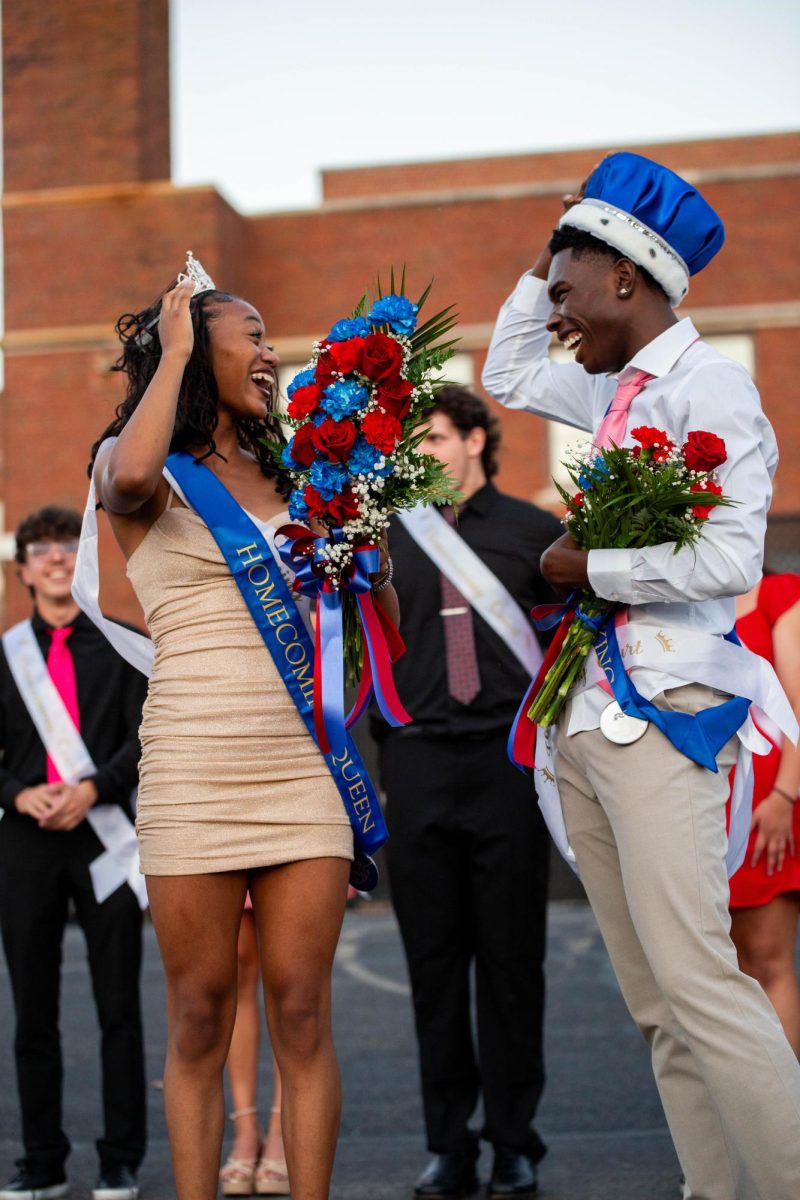Best Dressed: Is Central’s Dress Code Policy Fair?
March 23, 2023
Dress codes are a large part of life at schools all over the world. Some are extreme, like in Japan where ear piercings are prohibited and you must wear a school uniform, and some are extremely lax like most schools in the U.S, where no one will care if you dye your hair neon green and wear ripped jeans. Central’s dress code is just like most schools’, and I have copy and pasted the following text from the Davenport Community Schools official website;
- Students may not wear halter-tops or tops that do not cover their back, or tops that show cleavage.
- Students’ tops must meet the waistband of the bottom clothing they are wearing in a standing position and have shoulder straps (no spaghetti straps).
- Undergarments should be covered at all times.
- Pants may not ‘sag’.
- Pajamas and slippers are not allowed.
- Footwear must be worn at all times.
- Elementary Only: For safety purposes flip–flops are not allowed.
- Shoes with rollers on the bottom are not allowed.
- Hats, bandanas, sunglasses, spiked jewelry, chains hanging from clothing or accessories or other items that pose a potential safety hazard may not be worn.
- Coats cannot be worn in the classrooms and must be kept in lockers.
Students who do not follow this dress code are subject to many different disciplinary actions, such as wearing P.E clothes or clothes provided by the school, having parents bring in clothes, and being made to remove hats. The dress code itself is outdated, and has not been updated to consider modern standards of dress and trends. No new dress code will be created, but most teachers do not enforce dress code. The teachers that do, however, are more likely to enforce it on girls. Most of the ones who do enforce it are more likely to say something to girls with bigger chests, who aren’t a size 2, or who are dressed outside of what they would normally wear to school. One story like this comes from Lewanna Woolley, a Junior.
During her sophomore year, she wore her homecoming dress with jeans over it, and a girl called her a slut. When she was talking to her brother about it, he reinforced it by saying if she didn’t want to be called one, she shouldn’t dress like one. Annoyed, she went to talk to her counselor, who asked her if she would wear the outfit to work or to a job interview and told her that he wouldn’t want his sister to dress like that, and asked her if she could wear a jacket over her chest and arms. It is worth noting that Lewanna has a larger bust, and was specifically asked to cover her chest.
In some cases, it comes to cases where a teacher would rather have a student cover up than get an education. A student who wishes to remain anonymous shared a story of this case where they were told to leave the classroom by their teacher because of what they were wearing. “She told me that my outfit made her uncomfortable and when I asked her why, she told me to leave. She’s let other girls wear just a bra as a crop top, but my shoulder was a problem,” the student said. They told me they were wearing jeans, a lacy green crop top with spaghetti straps, and had on a jacket that had slipped off of their shoulder.
Some teachers, however, will enforce it on both sexes. The same anonymous student provided a story, saying that their second block teacher said that their shoulder was “too revealing” and asked them to cover up, but later in the class period also asked a boy to cover his shoulders when he took off his hoodie and was wearing a tanktop.
The long and short of the problem is that an outdated dress code can’t be expected to hold up, and the teachers that enforce it tend to be sexist or old-fashioned. The main target of the dress code is girls, who are taught from an early age to cover up so the boys don’t get distracted. It seems, however, that the only distracted ones are the teachers.




